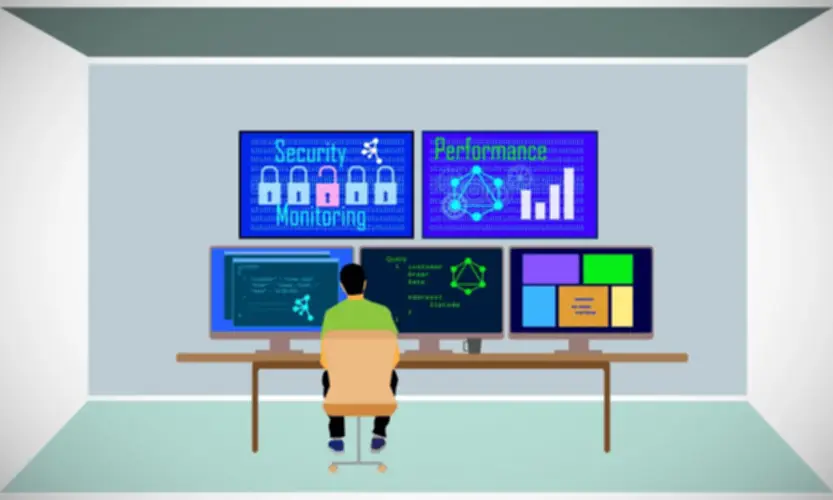Without having code testing tools, static analysis will take a lot of work, since humans must review the code and determine the means it will behave in runtime environments. Therefore, it is a good suggestion to find a static analysis definition software that automates the process. Getting rid of any prolonged processes will make for a more efficient work environment. Static testing is a software program testing technique used to determine defects in a software software without executing its code. Alan Richardson has more than twenty years of professional IT experience, working as a developer and at each degree of the testing hierarchy from Tester via to Head of Testing. Head of Developer Relations at Secure Code Warrior, he works directly with groups, to enhance the event of high quality secure code.
The Variations Between Static Testing In Software Testing And Dynamic Testing

A defect detected during the https://www.globalcloudteam.com/ necessities section might price around $60 USD to fix, whereas a defect detected in manufacturing can value as a lot as $10,000! By adopting static analysis, organizations can scale back the number of defects that make it to the manufacturing stage and considerably reduce the general value of fixing defects. Dynamic code evaluation identifies defects after you run a program (e.g., during unit testing).
What Are The Restrictions Of The Static Analysis Instruments In Static Testing?
- One the first uses of static analyzers is to adjust to standards.
- Static evaluation tools can detect a variety of issues but they may produce false positives and false negatives.
- After working the software, you want to analyze the problems detected and confirm their validity, severity, and influence.
- This highlights the significance of static testing, a practice our staff actively makes use of to make sure top-notch software high quality.
Acceptance testing ensures that the software meets the requirements of its stakeholders, while regression testing confirms that adjustments to the software don’t introduce new defects. Finally, exploratory testing involves testing the software unscripted and creatively to uncover points different testing methods could have missed. One of the most effective things you are in a position to do to be successful is to know the 4 primary kinds of static code evaluation and the errors these checks are designed to detect. Organizations are paying more attention to software safety, owing to the rising variety of breaches.
Synopsys Provides Probably The Most Complete Answer For Integrating Safety And Quality Into Your Sdlc And Supply Chain

As compared to guide testing, static evaluation tools can even enhance the speed of software testing. Test automation instruments can detect defects (or problems) in software program code early within the growth part. Static analysis tools can even pinpoint the exact location of the software bug, thus enabling quicker decision.

What Are The Advantages Of A Static Code Evaluation Tool?

It can even detect safety issues by pointing out paths that bypass security-critical code similar to code for authentication or encryption. Static code analysis also supports DevOps by creating an automatic feedback loop. Developers will know early on if there are any issues of their code. Static analysis is often used to comply with coding tips — similar to MISRA. And it’s typically used for complying with trade standards — such as ISO 26262. For instance, it’ll solely discover faults in the particular excerpt of the code being executed, not the entire codebase.
Regression Testing: Definition, Importance, Varieties, And Finest Practices

Additionally, avoid obscure, subjective, or harsh feedback which will demotivate or offend the developer. Encourage questions, discussions, and learning opportunities whereas respecting the opinions and views of the developer. Acknowledge the strengths and achievements of the code and appreciate the efforts and contributions of the developer. Dynamic program analysis tools might require loading of special libraries and even recompilation of program code.

Use case necessities guarantee potential end-user actions are correctly defined. Functional requirements will establish any needed requirements for the software program. Evaluate the software’s licensing model, whether it follows a per-user, organizational, program, or lines-of-code analyzed method. Pay attention to variations in licenses, corresponding to these designed for consulting projects versus end-users. Verify that the static analyzer supports the coding commonplace relevant to your trade, significantly if you operate in a regulated sector with specific coding standards.
To create high-quality software, it’s essential to completely test functions before releasing them to prospects. There are numerous strategies available to rigorously analyze the software you’ve developed. Static testing is a valuable software improvement method that focuses on preventing defects early on, without executing the code. By performing static tests in the early phases of development, you can avoid potential defects and enhance code quality. In industries with stringent regulatory necessities, adherence to coding standards and compliance guidelines is non-negotiable.
Rather than amend a configuration file, all the configuration could be carried out in the GUI. When creating new recipes the GUI makes it straightforward to see which code the recipe matches. And when defining the QuickFixes the earlier than and after state of the code may be compared immediately. This makes it simpler to create very contextual recipes i.e. distinctive to groups, or know-how, and even individual programmers. The objectivity is provided by the principles used since these don’t vary of their analysis of code over time.
Despite these disadvantages, static testing continues to be a strong tool within the QA’s and developer’s arsenal to ensure software quality. It ought to be combined with other testing methods to make sure most protection and detection of varied defects during development. Coverity scales to accommodate hundreds of builders and can analyze tasks with greater than a hundred million lines of code with ease.
Supports 2500+ totally different rules that cowl trade coding requirements similar to AUTOSAR C++ 14, MISRA, JSF, CERT, CWE, and extra. Functional testing validates the software system based on the useful requirements/specifications. It’s essential to note that SAST tools must be run on the applying frequently, such as during daily/monthly builds, every time code is checked in, or during a code release. Static scanning provides info to help predict what could occur when code is built-in and executed.
Static evaluation is the automation course of to minimize back the time and value of the project. Static evaluation, also known as static code analysis, is a technique of laptop program debugging that’s done by analyzing the code with out executing this system. The course of provides an understanding of the code construction and can help ensure that the code adheres to trade requirements.

Leave a Reply